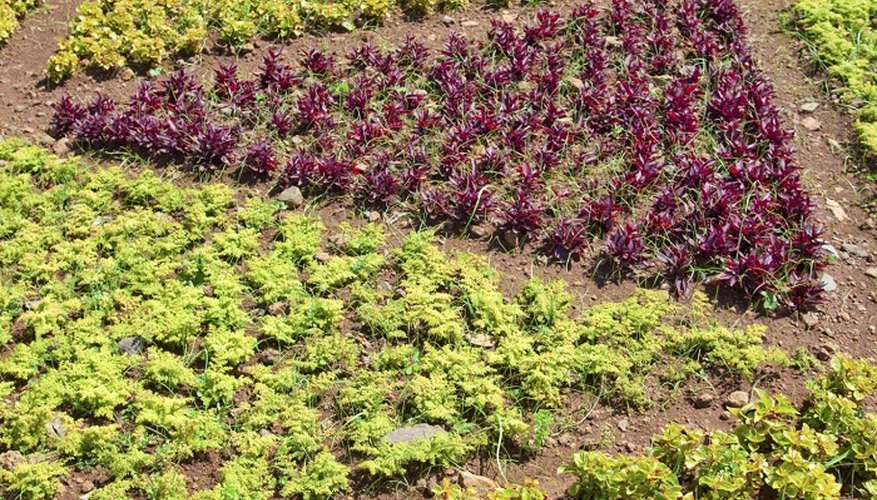A triangular garden is a landscape challenge that rewards the imaginative. A small slice of garden might lurk behind a block of flats or in a tight end plot on a new housing estate. Take the maths problem of what to do with the area of the triangle and turn it into a successful formula for living, gardening and just enjoying the view.
Narrow triangle
When the garden is a skinny triangle, plant it like a dense flowerbed in a cottage garden so the view from the house is a lush arrangement. Espalier some flowering or fruiting trees along the back fence for height and interest in summer and sculptural shapes in winter. Put large containers for dwarf evergreens at either end and set a few boulders throughout the space. The boulders will anchor the empty garden in winter and provide climbing surfaces for ground cover and vines in spring, summer and autumn. Use two or three low tepees or obelisks for honeysuckle or bean vines. Add large wide pots for ornamental grasses that will brown nicely in winter, and fill in the front border with changeable annuals, from crocuses and daffodils to purple coneflowers and lilies.
- When the garden is a skinny triangle, plant it like a dense flowerbed in a cottage garden so the view from the house is a lush arrangement.
- Espalier some flowering or fruiting trees along the back fence for height and interest in summer and sculptural shapes in winter.
Pizza slice
Turn your triangular plot into a pizza slice garden. Mark off areas to grow tomatoes along the "crust" side, and rows or plots of parsley, oregano, basil, onions and red peppers in the rest of the space. Add a few chilli pepper bushes if you like your pizza hot. Place small reddish-brown stepping stones, like pepperoni slices, between plots so weeding and harvesting are simple. Along the borders of the garden, "plant" paving stones to make a patio for a garden table, umbrella and chairs. If the yard is large enough, build a pizza oven outside for a completely al fresco pizza experience.
- Turn your triangular plot into a pizza slice garden.
- Place small reddish-brown stepping stones, like pepperoni slices, between plots so weeding and harvesting are simple.
Triangle tricks
Divide the garden into smaller triangles and mix it up further with varying heights for a multi-use small space that seems bigger than it is. Pave half the garden with bluestone to make a patio that's raised one step up from the rest of the plot. Pave a path from the house to the patio and frame the door to the house with an arbor of wisteria or roses. Plant the remaining garden in tiers. Use raised planters faced with stone for taller evergreen trees and bushy shrubs along the perimeter and fence. Create small, broken sections of stacked stone wall and train flowering vines or ivy over them. Tuck a fountain into the flowerbeds to mask noise. Fill in with patches of flowers, low foliage, ferns and groundcover.
- Divide the garden into smaller triangles and mix it up further with varying heights for a multi-use small space that seems bigger than it is.
- Pave a path from the house to the patio and frame the door to the house with an arbor of wisteria or roses.
Estate angles
Give a tiny triangle the grandeur of estate landscaping by borrowing an idea from Cliveden, a National Trust house and garden near London. Place a narrow paver patio at the house and edge it with open stone benches separated by a centre break. Run the pavers through the break and into the triangular garden for a path. Line the fences with dense, evergreen shrubs, meticulously trimmed and no taller than about 1.2 metres (4 feet). Inside the hedge, plant beds of mono-colour annuals or intersperse perennials, foliage plants and evergreens with annuals so there is something blooming or thriving in every season.
- Give a tiny triangle the grandeur of estate landscaping by borrowing an idea from Cliveden, a National Trust house and garden near London.
- Run the pavers through the break and into the triangular garden for a path.
